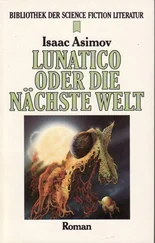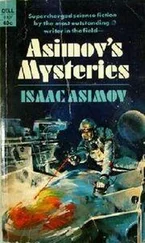Isaac Asimov - Asimov’s Guide To Shakespear. Volume 1
Здесь есть возможность читать онлайн «Isaac Asimov - Asimov’s Guide To Shakespear. Volume 1» весь текст электронной книги совершенно бесплатно (целиком полную версию без сокращений). В некоторых случаях можно слушать аудио, скачать через торрент в формате fb2 и присутствует краткое содержание. Жанр: Культурология, на английском языке. Описание произведения, (предисловие) а так же отзывы посетителей доступны на портале библиотеки ЛибКат.
- Название:Asimov’s Guide To Shakespear. Volume 1
- Автор:
- Жанр:
- Год:неизвестен
- ISBN:нет данных
- Рейтинг книги:4 / 5. Голосов: 1
-
Избранное:Добавить в избранное
- Отзывы:
-
Ваша оценка:
- 80
- 1
- 2
- 3
- 4
- 5
Asimov’s Guide To Shakespear. Volume 1: краткое содержание, описание и аннотация
Предлагаем к чтению аннотацию, описание, краткое содержание или предисловие (зависит от того, что написал сам автор книги «Asimov’s Guide To Shakespear. Volume 1»). Если вы не нашли необходимую информацию о книге — напишите в комментариях, мы постараемся отыскать её.
Asimov’s Guide To Shakespear. Volume 1 — читать онлайн бесплатно полную книгу (весь текст) целиком
Ниже представлен текст книги, разбитый по страницам. Система сохранения места последней прочитанной страницы, позволяет с удобством читать онлайн бесплатно книгу «Asimov’s Guide To Shakespear. Volume 1», без необходимости каждый раз заново искать на чём Вы остановились. Поставьте закладку, и сможете в любой момент перейти на страницу, на которой закончили чтение.
Интервал:
Закладка:
The medieval church did not distinguish between lending out of charity and lending out of business need, and interest on both were alike forbidden.
The Jews, however, might interpret the Exodus verse as applying to "my people" (i.e., Jews) only. Lending at interest to non-Jews would therefore be permissible. Furthermore, Jews in Christian countries found themselves locked out of one type of employment after another, until very little was left them but the profession of moneylending, which was (in theory) forbidden to Christians.
Thus was set up the sort of vicious cycle that is constantly used to plague minorities of any land. Jews were forced into becoming usurers and then the fact that they were usurers was used to prove how villainous and hateful they were.
To make matters still more ironical, Christians were by no means as virtuous in the matter as theory had it. The church's strictures could not stand up against economic needs. Christian usurers arose in northern Italy to the point where the term "Lombard" (see page I-447) became synonymous in England with "pawnbroker" or "moneylender." In fact, it was because Italian moneylenders came to England in the thirteenth century that Edward I was able to do without Jews and could expel them from the nation.
… once upon the hip
Shylock broods on the wrongs he and his have suffered, and he mutters:
If I can catch him once upon the hip [at a disadvantage], /
will feed fat the ancient grudge I bear him.
He hates our sacred nation.. .
—Act I, scene iii, lines 43-45
The hatred is thus mutual (and in a passage shortly to come Antonio makes it clear that it is). The villainy is not, however. To the Christian audience, Shylock's hatred of Christians is a mark of dark and malignant villainy, but Antonio's hatred of Jews is very natural and even praiseworthy. Undoubtedly, if the audience consisted entirely of Jews, the view would be precisely reversed-and no more rational.
This double standard in viewing the ethical behavior of oneself and one's enemy is common to almost all men and is the despair of the few.
The skillful shepherd …
Antonio and Bassanio are anxious for a definite reply from Shylock, but Shylock delays as he considers how best he might turn Antonio's need to his advantage.
Shylock is stung, too, by Antonio's scornful hint that ordinarily he does not lend or borrow at interest. Shylock feels it necessary to prove that shrewd bargaining is not sinful.
He turns to the Old Testament and cites the case of Jacob, who agreed with his uncle, Laban, to herd his sheep and goats and take for his own pay only those lambs and kids who were born streaked, spotted, or otherwise not of solid color.
Ordinarily these would have made up a tiny minority of the young (which was why Laban agreed to the bargain), but Jacob peeled wands in such a way as to give them a striped appearance and placed them where the ewes would see them during the act of mating. Shylock says:
The skillful shepherd pilled me certain wands,
And in the doing of the deed of kind [mating]
He stuck them up before the fulsome ewes,
Who then conceiving, did in eaning [lambing] time
Fall parti-colored lambs, and those were Jacob's.
This was a way to thrive, and he was blest;
And thrift is blessing if men steal it not.
—Act I, scene iii, lines 81-87
The story is a reasonably accurate rendition of the second half of the thirtieth chapter of Genesis. The belief that the characteristics of the young can be influenced by the nature of the environment during conception and pregnancy is part of the folklore of the ages, but it lacks any real foundation. No reputable biologist accepts this view, nor can real evidence be cited for it, and even the authority of the Bible is insufficient to put it across.
If the biblical tale were true and if the young animals were born as described, it would have had to be the result of a miracle and not of any natural event brought about by Jacob.
… cite Scripture…
The case of Jacob is a poor one to support usury (something Antonio quickly poults out), and a real Jew could easily have found better arguments. However, the use of the Jacob tale is to condemn Shylock to the andience rather than to support him. Since he is made to quote, with approval, a shady act of business on the part of Jacob, the audience can nod to each other and say "Jews were always like that from the very beginning."
But to avoid some of the blame appearing to stick to the Bible rather than to Shylock (for Shakespeare never knowingly sought trouble with the authorities) Antonio is made to remark in an aside to Bassanio:
The devil can cite Scripture for his purpose.
—Act I, scene iii, line 95
This is not merely a metaphorical reference to Shylock, but is a direct derivation from a biblical tale. Matthew tells of Jesus being tested in the desert by the devil, who tries to persuade Jesus to display miraculous powers for prideful self-aggrandizement.
Thus, the devil takes Jesus to the top of the Temple in Jerusalem and urges him to jump off in order that he might display the protection that angels would afford him. The devil accompanies his urging with a quotation from the Old Testament, saying: "… for it is written, He shall give his angels charge concerning thee: and in their hands they shall bear thee up, lest at any time thou dash thy foot against a stone." (This is from Matthew 4:6 and the quotation is from Psalms 91:11-12.)
… my Jewish gaberdine
As Shylock continues to be pressed, his politeness suddenly snaps and his hatred peeps forth. Bitterly, he begins:
Signior Antonio, many a time and oft
In the Rialto you have rated [reviled] me
About my moneys and my usances.
Still [Always] have I borne it with a patient shrug.
For suffranee [patience] is the badge of all our tribe.
You call me misbeliever, cutthroat dog,
And spit upon my Jewish gaberdine,
—Act I, scene iii, lines 103-9
The Jewish gaberdine was a long, coarse cloak of the kind pilgrims wore in humility, to show that they were approaching some shrine as sinners hoping to be forgiven. In many places, Jews were forced to wear some distinctive garb of humiliating nature that had the double duty of indicating to the world what sinners they were and at the same time warning Christians from afar, so that they need not be sullied by showing Jews any kindness or courtesy.
Indeed, in the very city of Venice in which this play is laid, and in 1516, some eighty years before the play was written, the authorities went further. It was decided to herd the Jews into a special quarter which could be efficiently isolated. In part, this was a further development of the idea that Jews should not pollute Christians with their presence; and in part there was a kind of humanity behind it, since the Jews were safer in their own section and could be more easily protected by the authorities against looting and lynching. (They could also be more easily massacred en masse if the authorities chose to look the other way.)
For the purpose, the Venetians chose an island on which an iron foundry (gheto in Italian) must once have stood, for that was the name of the island. It was established as the Jewish quarter and "ghetto," with an additional "t," has gone ringing down history ever since as the name for any Jewish quarter anywhere and, in very recent times, for any city area occupied largely by any minority group.
Again, a vicious cycle was established. The Jews were forced to dress differently and live separately and were then hated for being different and exclusive.
Читать дальшеИнтервал:
Закладка:
Похожие книги на «Asimov’s Guide To Shakespear. Volume 1»
Представляем Вашему вниманию похожие книги на «Asimov’s Guide To Shakespear. Volume 1» списком для выбора. Мы отобрали схожую по названию и смыслу литературу в надежде предоставить читателям больше вариантов отыскать новые, интересные, ещё непрочитанные произведения.
Обсуждение, отзывы о книге «Asimov’s Guide To Shakespear. Volume 1» и просто собственные мнения читателей. Оставьте ваши комментарии, напишите, что Вы думаете о произведении, его смысле или главных героях. Укажите что конкретно понравилось, а что нет, и почему Вы так считаете.







